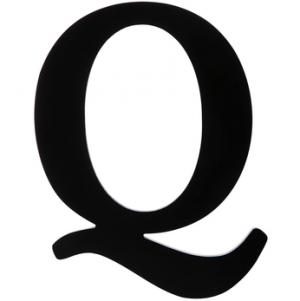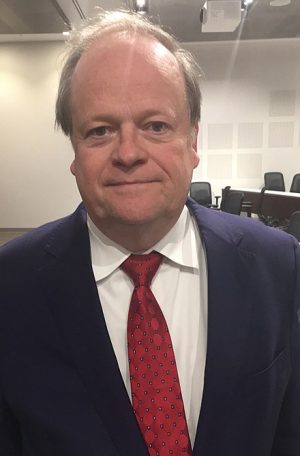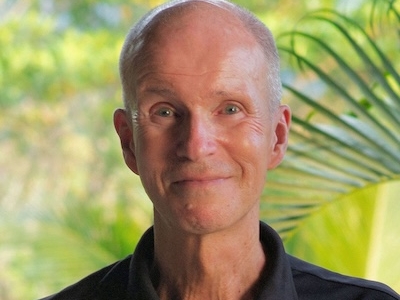The Hockey Canada scandal has been in the news a lot this year. We spoke to Yves Savoie, an executive coach and strategy advisor to not-for-profits and charities, about broader lessons in terms of organizational governance and for boards of directors. Savoie has more than thirty years of experience as a CEO of large charities, including CEO of Heart & Stroke Canada, the Multiple Sclerosis Society of Canada, and the chief fundraiser of the Royal Ontario Museum. In this interview, he refers to a report, in English and French, by Justice Thomas Cromwell, a retired justice of the Supreme Court of Canada, both of which are available in French and English. The interview with Savoie has been edited for brevity.
 A board of directors should exercise a ‘challenge function.’ How does a board ask challenging or hard questions — and do this well?
A board of directors should exercise a ‘challenge function.’ How does a board ask challenging or hard questions — and do this well?

Yves Savoie is an executive coach and strategy advisor to nonprofits and charities.
Savoie: The ‘challenge function’ is a type of inquiry and is about creating a culture that allows difficult questions, sometimes pointed questions, to be asked. So, when we talk about ‘challenge,’ we’re not talking about challenging an individual. Instead, we’re talking about challenging issues, approaches or frameworks — to hold people to account, to ensure there’s fiduciary, policy and other compliance or to address ethical or strategic issues. For instance, it’s important for board agendas and for information flows to maximize the time during board meetings for the board members, not just staff members, to be engaged and to ask challenging questions. This is central to a board’s role either in public or in camera.
Boards and staff have to work closely as partners, with trust, yet not so close, not so cozy, so as to prevent people from asking tough questions, and that requires a tough skin among CEOs and an awareness that boards have the responsibility to sometimes ask tough questions — and the acknowledgment that such questions aren’t an attack and are, in fact, an exercise of due diligence. I think of governance as an ecosystem, and the CEO and board members are part of the ecosystem, and both have the responsibility to create a culture where difficult questions, processes of inquiry, are invited and welcomed — and that’s what the challenge function is about.
 Do you have any advice for nonprofits about their policy manuals and reserve funds, given what happened at Hockey Canada?
Do you have any advice for nonprofits about their policy manuals and reserve funds, given what happened at Hockey Canada?

Justice Thomas Cromwell, a retired justice of the Supreme Court of Canada, wrote a report identifying problems at Hockey Canada.
Savoie: Hockey Canada commissioned a report from retired Justice Thomas Cromwell that sheds light on the situation, in plain language, with lots of references – for people who want a primer on the governance of nonprofit organizations. Hockey Canada is registered as an amateur athletic association, which is akin to a charitable organization. There are two examples that I lift from my reading of the Justice Cromwell report.
First, Hockey Canada doesn’t make public its audited financial statements because they fear they’ll be seen as a ‘rich’ organization and that such perception will impact their attractiveness to sponsors. There’s nothing wrong with being transparent. The University of Toronto posts online the detailed, 10-page employment contract of its president. York University, the MS Society, the United Way of Greater Toronto, the Canadian Blood Services and other large organizations have opened their doors very wide to be transparent about financial statements, policies and procedures, public complaint systems, whistleblower systems, and a lot more. Hockey Canada made clear mistakes in presupposing that people would make judgements of information that should be available to the public.
But the other example is that Justice Cromwell cites intra-fund transfers and funds disbursements related to those who alleged sexual harassment violations and notes that Hockey Canada minutes don’t show any records for decision-making related to those. There’s a big, big mistake in Hockey Canada’s conception of an in-camera meeting. ‘In-camera meeting’ does not mean that there’s no requirement to keep records about decision-making — not what it means at all. It may require that those records be confidential, so that you have a separate part of the minutes that reflects the minutes of the in-camera portion. But the practice on that is very well known. That they should have chosen to make big decisions and not record them is a big failure. So, as you look at this, you kind of say, “Really? No transparency? No record of decisions that have great import?”
For me, those are just two lessons to learn from the Hockey Canada experience.
 Under what conditions, and how, does a board fire a CEO? More generally, how does a board exercise effective oversight of the CEO?
Under what conditions, and how, does a board fire a CEO? More generally, how does a board exercise effective oversight of the CEO?
 Savoie: In the Hockey Canada situation, people weren’t looking for only the CEO to be ousted; they wanted more than that; the board’s integrity was called into question. There are two things. First, what we know is that harm was caused. This wasn’t proven in a court of law, but, in private settlements, it seems harm was caused. However, there’s a second problem: those who are responsible for the possible egregious acts are shielded from accountability (because the settlements are private). These problems of harm to persons and shielding those responsible point to the accountability of the organization, not only to that of the CEO.
Savoie: In the Hockey Canada situation, people weren’t looking for only the CEO to be ousted; they wanted more than that; the board’s integrity was called into question. There are two things. First, what we know is that harm was caused. This wasn’t proven in a court of law, but, in private settlements, it seems harm was caused. However, there’s a second problem: those who are responsible for the possible egregious acts are shielded from accountability (because the settlements are private). These problems of harm to persons and shielding those responsible point to the accountability of the organization, not only to that of the CEO.
But let’s go to a situation in which only a CEO’s performance is at issue, a situation where there seems to be a clear failure. Actually, a clear failure in the performance of a CEO is rarely the case (unless, for example, a CEO has committed fraud). Situations where problems in performance are observed by some and not by others and are a source of disagreement among the board — these are typically the way these problems arise. Firing a CEO is one of the most difficult decisions a board will ever make, and unlike most board decision-making, they’re fractious and may take time to progress from the hallway to the board table, and from a minority to a majority point of view, and from there, to a termination. And there’s the related question of who will fill the role of CEO later, both the interim CEO and the permanent CEO. These decisions are really difficult.
Boards need to do a number of things to make this easier. One is to make sure that the whole board has sight lines to issues that relate to performance of the CEO. While a CEO performance review may be carried out by a few officers of the board or by a committee, the board should be invited at the front end and be briefed at the back end, in an in-camera session, about what has transpired. For instance, are there areas of shortfall where the CEO has been asked to improve performance or deepen their capabilities? Was this a year in which there were no compensation adjustments because the performance was deemed to be average or unsatisfactory? Often, those kinds of questions only bubble up for the whole board when a real crisis has developed.
Also, I’m one who believes that, on an annual basis, the board should get a confidential briefing on the entire compensation package for the CEO, so that there’s transparency about compensation and performance expectations. And expectations have to cover both the ‘what’ (increase revenue, increase program impact, build another site, run a capital campaign, or whatever ‘what’ is) and cover the ‘how’ (build a culture free of conflict, or another kind of ‘how’). These sight lines give the board signals about a CEO’s performance.
 Are there other lessons for nonprofit governance and guidance for boards, CEOs and members — things we can learn from the Hockey Canada case?
Are there other lessons for nonprofit governance and guidance for boards, CEOs and members — things we can learn from the Hockey Canada case?
Savoie: Yes. Boards rely on management to curate information to them. Most of the information that’s in a board binder comes from the staff. It’s entirely appropriate for boards to consider, at regular intervals (at least once a year or every two years), whether or not the information they’re getting is relevant to their decision-making. Is the information at the right level? Is it timely? And is it framed in the right way?
Let me give you an example. Most CEO reports tend to celebrate success. As human beings, we like that, but the reports invite the possibility that they overlook a challenge, difficulty or failure. It’s important for boards to say, “Let’s ask the CEOs to complete a report about compliance, about certain questions. For example, “Has there been a lawsuit served? Was the whistleblower line triggered? Was there a complaint of violence or harassment that’s been formally made in your workplace?” And the CEO has no choice but to answer those kinds of things. This process augments the richness, the timeliness, of what I would describe as the ‘bad news digest’ for the board. Boards need to be proactive about these kinds of things, and see that failures and mishaps are an opportunity to learn, repair and to grow. And, in my reading of Justice Cromwell’s report, that wasn’t part of Hockey Canada’s culture.
Yves Savoie is on LinkedIn. Photos are courtesy of Yves Savoie and Logan Weaver.
Monday, November 21, 2022 in For homepage, Governance, Leadership & Governance, News & Events
Share: Twitter, Facebook



